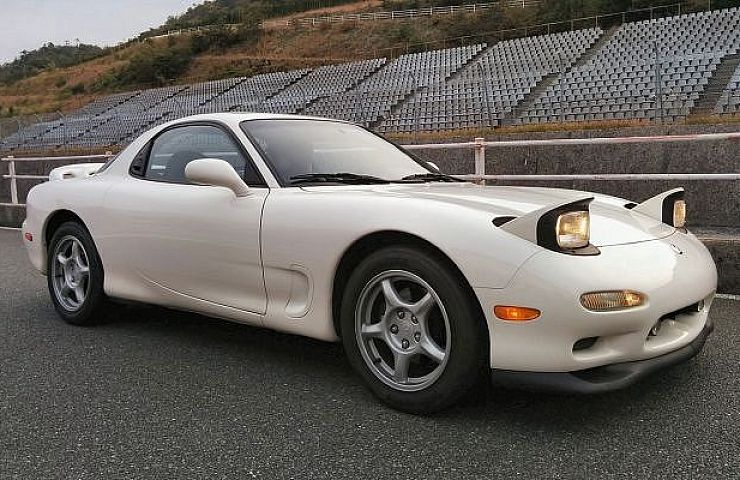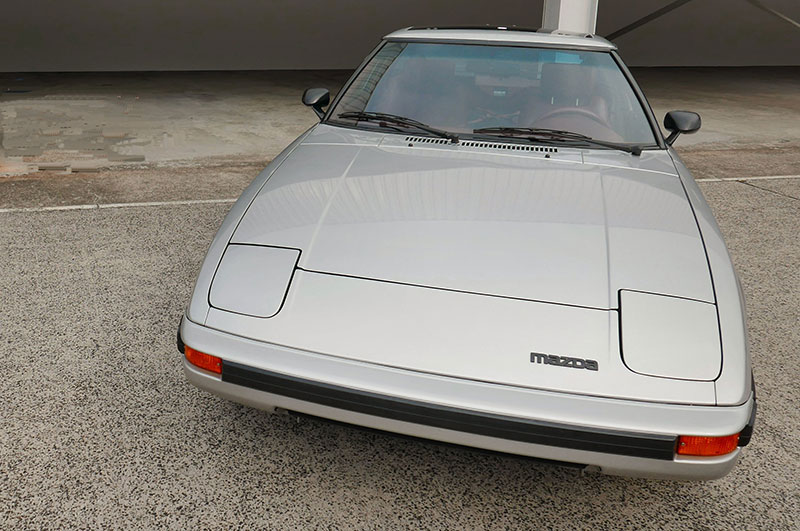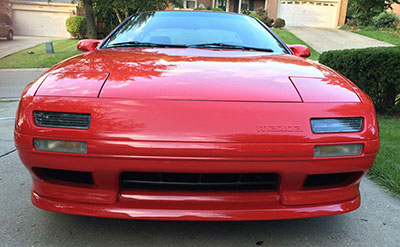Mazda’s showing of the RX-Vision Concept at the 2015 Tokyo Motor Show generated a lot of buzz for the company. It signaled Mazda’s potential return to the rotary motor. Whether it builds another Wankel-powered car or not, Mazda has a deep rotary engine heritage. So when was asked if we wanted to flog all three generations of the RX-7 sports car around the track at the automaker’s Mine Proving Grounds near Hiroshima, Japan, we said yes faster than you can spin a two-rotor to 9,000 rpm.
Starting At The Beginning, Sort Of
The RX-7 wasn’t the original rotary-powered car Mazda imported to America, but the two-door coupe was the first to capture the public’s imagination when it first went on sale in 1979. A 1985 GSL-SE was waiting for me at Mine. That’s the culmination of the original-generation model, which swapped out the standard carbureted 12A engine for an optional 13B, bumping horsepower by roughly 30 percent to sit at 135 for the final two years of production.
Its 7,000 rpm redline—combined with a lightweight design and a snug cockpit—demonstrated why so many sports car fans fell for the RX-7 when it was first released, and why it continues to be a popular, and affordable, option for classic rotary fans. Acceleration from the 13B was smooth and linear, and the live rear axle kept me on my toes while braking this version of the RX-7 at the end of each straightaway.
Softening The Edges
Mazda went in a different direction when it redesigned the RX-7 for the 1987 model year. While the naturally aspirated 13B was kept in the stable, the real star of the second-generation car was the turbocharged version of this same motor—boosting output to a healthy 215 horsepower in the Turbo II. It was clear from the first lap that this larger, more stable RX-7 was built for speed rather than nimble handling. Faster in comparison than its predecessor, the Turbo II made Mazda more of a player in the sports car segment—while preserving the unique high-revving character of the rotary engine design.
Going For Broke
By the time the early 1990s came around, Japanese automakers had taken off the gloves in their battle for sports car supremacy. With a huge investment in cutting edge technology producing iconic versions of the Toyota Supra and the Nissan ZX, Mazda got into the game with the third-generation, or “FD” RX-7 (shown as the top of this page).
Gorgeous from every angle, the FD’s killer app was its twin-turbo rotary engine, the 13B-REW, which produced as much as 280 horsepower in certain models. On the track at Mine Proving Grounds, the sensation of the 13B-REW’s second sequential turbo kicking in at 4,500 rpm was astounding, as the RX-7’s forward progress built steadily like a downhill diesel train towards whatever apex I aimed at. Certainly larger and heavier than its starting point, this ultimate evolution of the RX-7 brushed up against supercar status, and remains one of the most compelling rides of its decade.

A three-rotor engine sits under the hood of this full-size Eunos Cosmo coupe that Mazda also let us play with at Mine.
The rotary might be gone now, done in by a combination of a lack of consumer interest in the milder RX-8 that succeeded the FD, as well as stricter fuel efficiency regulations. But the dream lives on in these outstanding and unique sports cars. Sure, maintenance is a little more involved than with a standard piston engine—and RX-7 prices are starting to spike—but if you want to get behind the wheel of something completely unlike any modern automobile, a rotary is a great way to go.







